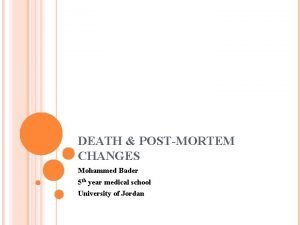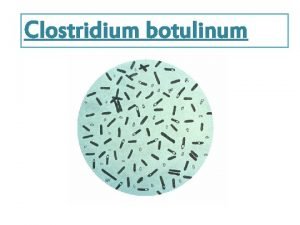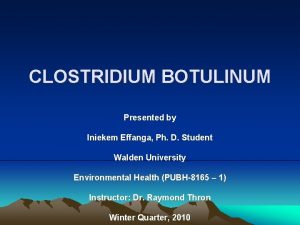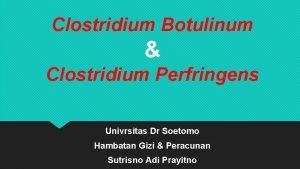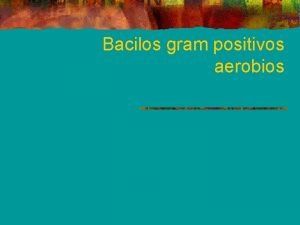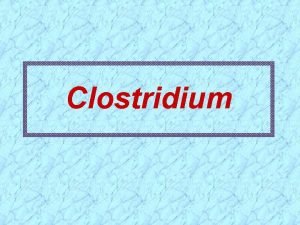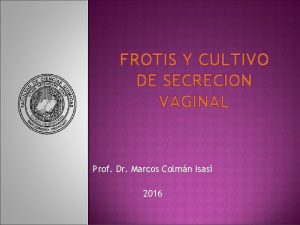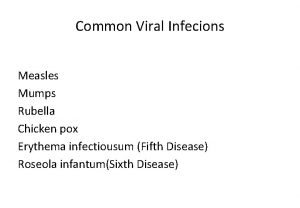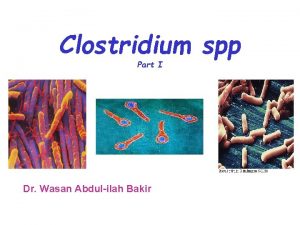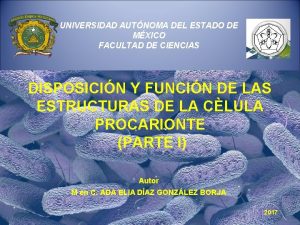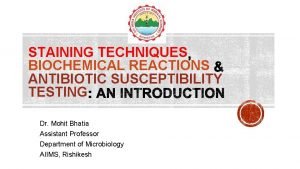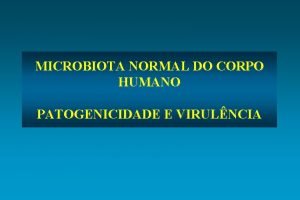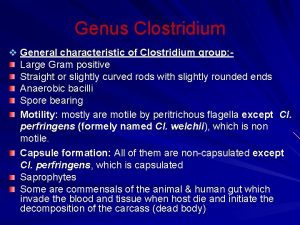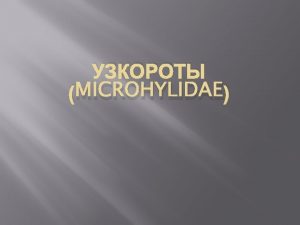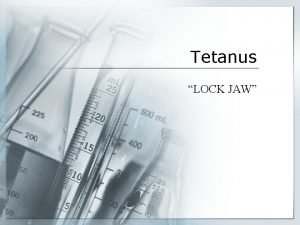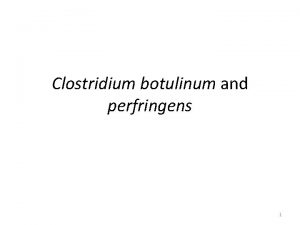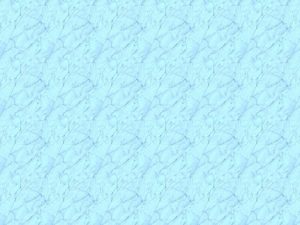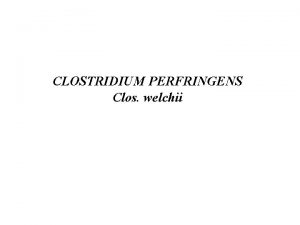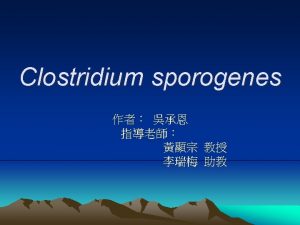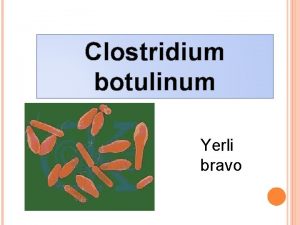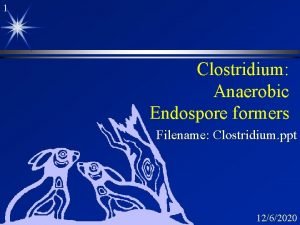SMLS LECTURE SERIES GENUS CLOSTRIDIUM 1 General Characteristics














- Slides: 14

SMLS LECTURE SERIES GENUS: CLOSTRIDIUM 1

General Characteristics Members of the genus Clostridium are fat and short or pleomorphic, spore-forming anaerobic Gram positive rods. Type species: C. perfringens. Other very important species are C. tetani, C. botulinum and C. difficile. 2

Habitat: Found in soil, water, sewage and some form part of the normal flora of GIT of man and animals. Toxins: Medically important species produce toxins some of which are very lethal. Antibiotic sensitivity: The species are usually sensitive to penicillin, metronidazole, clindamycin and erythromicin but are all resistant to gentamicin. 3

C. perfringens: Morphology: A short and fat bacillus which does not readily produce spores. It may exhibit pleomorphism. Culture: Grows well on BA anaerobically at 370 C. Selectively isolated with gentamicin blood agar. Some strains are beta haemolytic and show double haemolysis on BA. 4

Typing: Five types of C. perfringens A, B, C, D and E, based on the 12 toxins produced. Type A is the only human pathogen. Toxins: All types produce alpha toxin 5

The toxin, also known as phospholipase C enzyme, or lecithinase, causes the breakdown of lecithin in mammalian cell membrane. Basis for “Nagler” reaction. Other toxins: several other toxins are produced by the various types. Identification: Based on the neutralisation of alpha toxin with specific antitoxin. This is known as Nagler reaction. 6

Pathogenicity: Causes: - Gas gangrene: wounds associated with overwhelming destruction of tissue. - Food poisoning: when ingested in large numbers, produce entero toxin resulting in diarrhoea. C. tetani Morphology: Longer than C. perfringens but with distinctive terminal spores – “drumstick” appearance. 7

Toxin A highly potent toxin which is a protein. Two types: - Tetanospasmin: A neurotoxin responsible for the clinical manifestation of tetanus. It blocks the release of neurotransmitters for inhibitory snapses thus causing excitatory snaptic activity to be unregulated. , 8

-Tetanolysin: An oxygen labile toxin whose clinical significance is not fully understood. Pathogenicity: Tetanus results from contamination of wound by the organism resulting in the release of toxin. Tetanus may result from puncture wounds, septic abortion, circumscion or ear-piercing as result of using unsterile instruments. 9

Culture: Grows well on BA; strict anaerobe, beta haemolytic. Prevention and control: ATS vaccine. C. botulinum Found in soil, water, vegetable etc Seven types are recognised: Types A, B, C, D, E, F, and G. 10

Pathogenicity: Types A, B, E and F cause severe and usually fatal form of food poisoning, botulism in human. The toxin is the most active known poison. Infection is by ingestion of the pre-formed toxin in preserved food, usually home canned meat, and fish products. Signs and symptoms: Within 12 – 26 hours of ingestion, vomiting, thirst, constipation, blurred vision, 11

difficulty in swallowing, speaking and breathing. Death occurs 1 – 5 days after on set. Type C causes limber-neck in fowls. Type D causes botulism in cattle. Culture: Strict anaerobe, grows well on BA with beta haemolysis. Identification: Toxin neutralisation with specific anti toxin. 12

C. difficile Found as commensals in the GIT of 3 -5% of healthy persons. Pathogenicity: causes pseudomembraneous colitis following the use of broad spectrum antibiotics. The antibiotics eliminate other normal flora of the gut, thus allowing C. difficile to overgrow and produce its entero toxin. 13

Culture : Isolation from faeces on an aerobic selective medium. Identification: Colonies fluoresce under UV light as well as carbohydrate fermentation. Toxin: Toxin detection method is available. Refer to specialist text books for details! 14
 01:640:244 lecture notes - lecture 15: plat, idah, farad
01:640:244 lecture notes - lecture 15: plat, idah, farad Differentiate rigor mortis from cadaveric spasm
Differentiate rigor mortis from cadaveric spasm Clostridium reino
Clostridium reino Clostridium botulinum disease name
Clostridium botulinum disease name Morfologi clostridium perfringens
Morfologi clostridium perfringens Gentamicina que bacterias ataca
Gentamicina que bacterias ataca G
G Clostridium perfringens lecithinase
Clostridium perfringens lecithinase Como leer un frotis de flujo
Como leer un frotis de flujo Measles vs chicken pox
Measles vs chicken pox Clostridium tetani
Clostridium tetani L
L Granulos de volutina
Granulos de volutina Kopeloff and beerman's modification
Kopeloff and beerman's modification Clostridium perfringens morfologia
Clostridium perfringens morfologia

